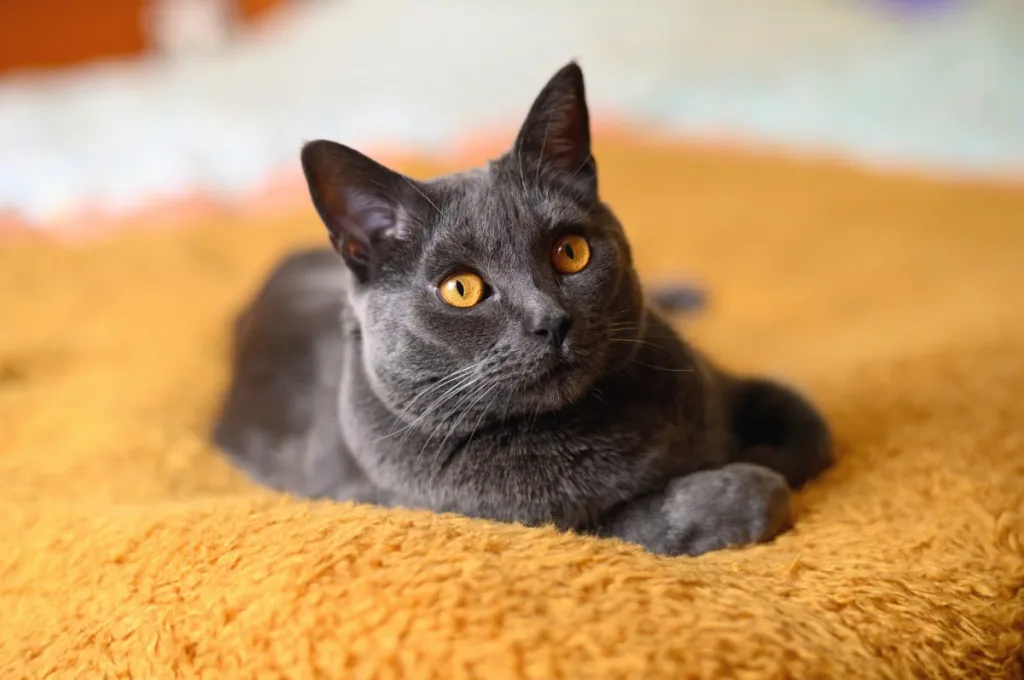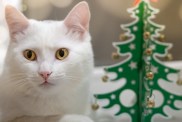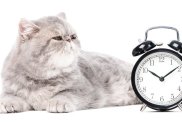The Chartreux cat, known for their quiet elegance and gentle disposition, is a beloved breed from France. These medium to large-sized cats have robust, muscular bodies, round faces, and copper or gold-colored eyes. One of the most striking characteristics of the Chartreux is their dense, short, water-resistant blue-gray coat, often described as “wool-like” in texture. Their fur can develop a slightly copper or russet hue as they age.
In terms of temperament, Chartreux cats are known for being affectionate, gentle, and sociable. They tend to form strong bonds with their human companions and are generally good with children and other pets. Despite their calm demeanor, they are intelligent and enjoy interactive play, making them suitable for families and individuals alike. Chartreux cats are often described as “smiling” due to their slightly upturned mouths, adding to their endearing and friendly expression. This breed is relatively low-maintenance in terms of grooming, thanks to their short coat.
When considering a Chartreux kitten, it’s advisable to prioritize adopting from rescue organizations or shelters to provide a loving home to a cat in need. However, if you decide to purchase, it’s crucial to choose a reputable breeder. Conduct thorough research to ensure that the breeder follows ethical practices and prioritizes the well-being of their cats. Reputable Chartreux kitten breeders prioritize the health and temperament of their cats, conduct necessary health screenings, and provide a nurturing environment for the kitties. This active approach ensures that you bring home a healthy and happy kitty while discouraging unethical breeding practices.
Quick Facts
- Origin: France
- Size: Medium
- Breed group: Natural
- Lifespan: 12-15 years
- Coat: Short, dense, and woolly, with a blue-gray color
- Temperament: Intelligent, playful, affectionate, and quiet
- Exercise needs: Moderate
- Training: Trainable
- Grooming: Low-maintenance
- Ste Cat, a Chartreux, is the mascot of the Montreal Jazz Festival.
- Jean-Baptiste Perronneau features a Chartreux in his work, “Magdaleine Pinceloup de la Grange,” or “Portrait of a Lady with a Cat,”
- The former French president, Charles de Gaulle, had a Chartreux named Gris-Gris who reportedly followed him from room to room.
Chartreux Pictures
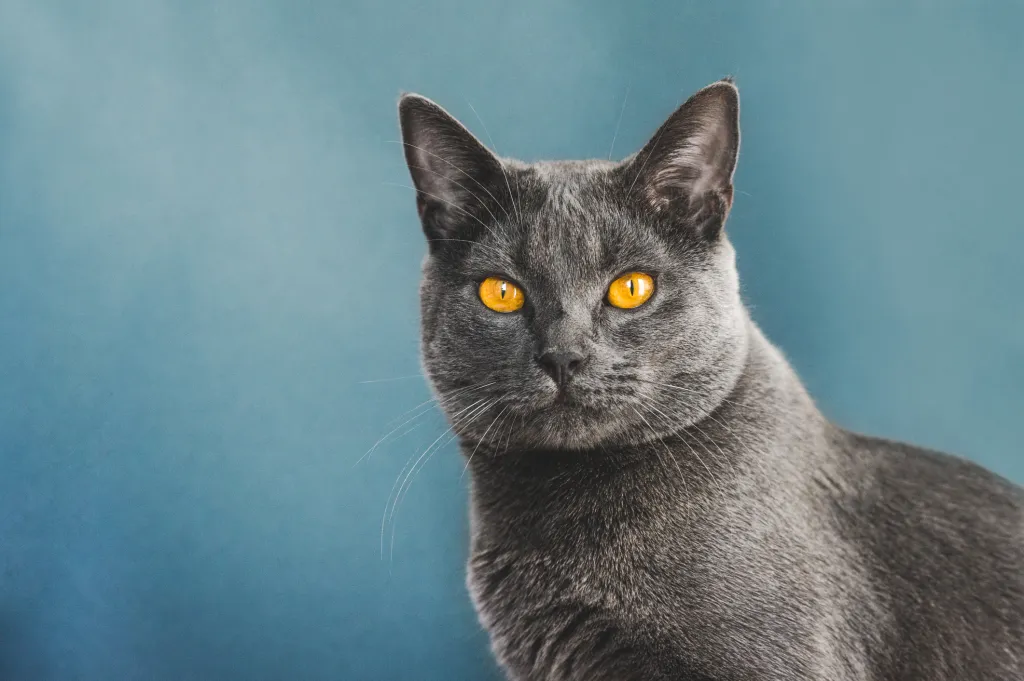
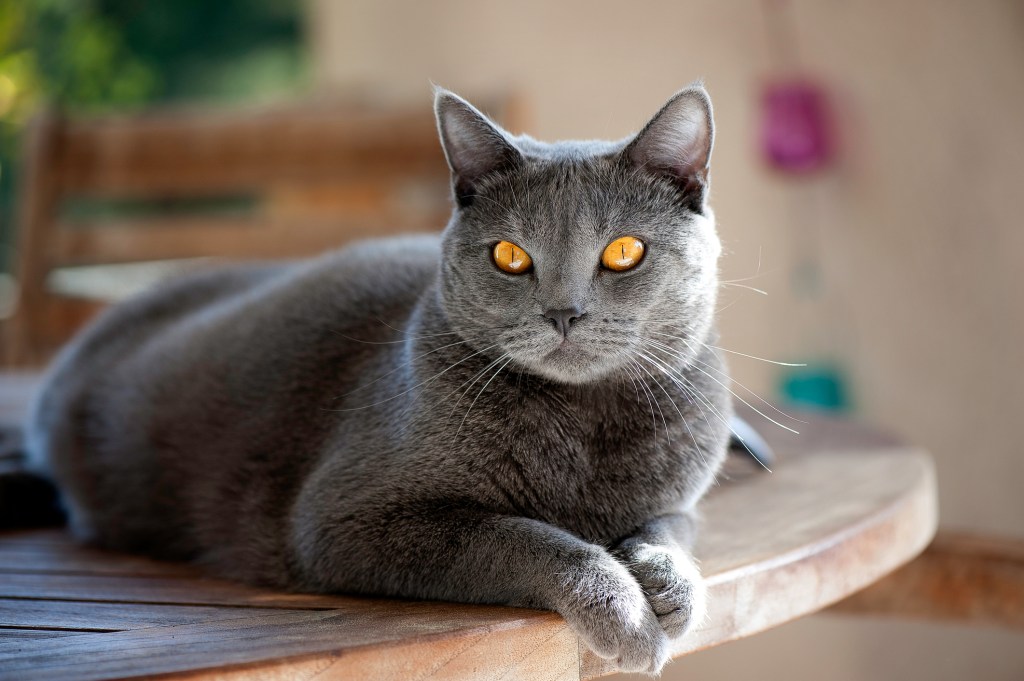
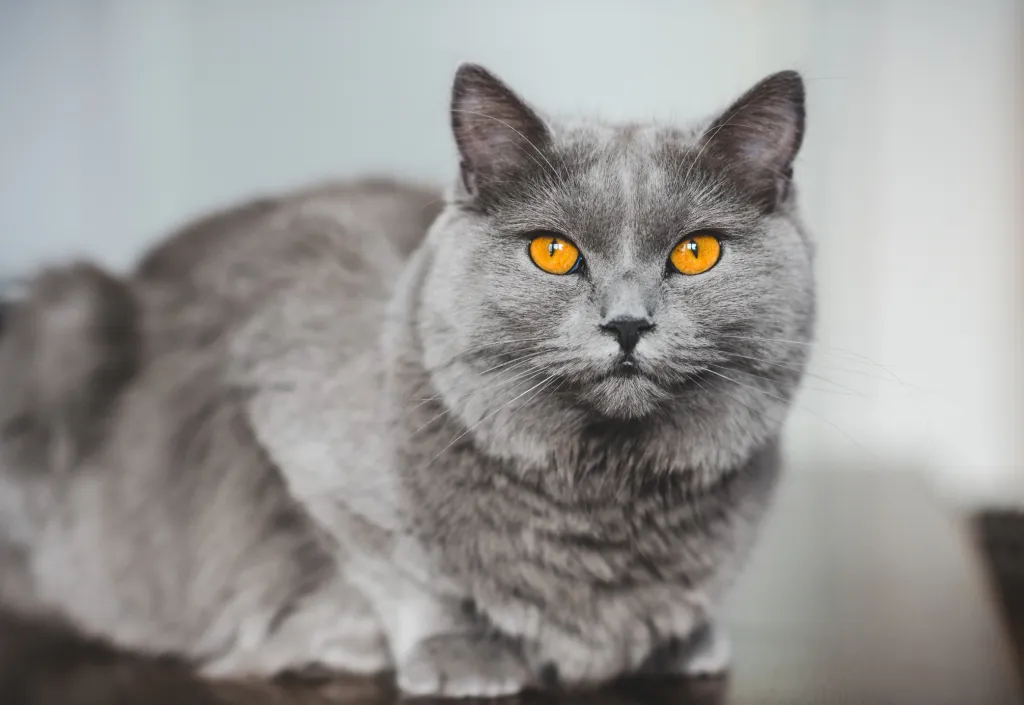
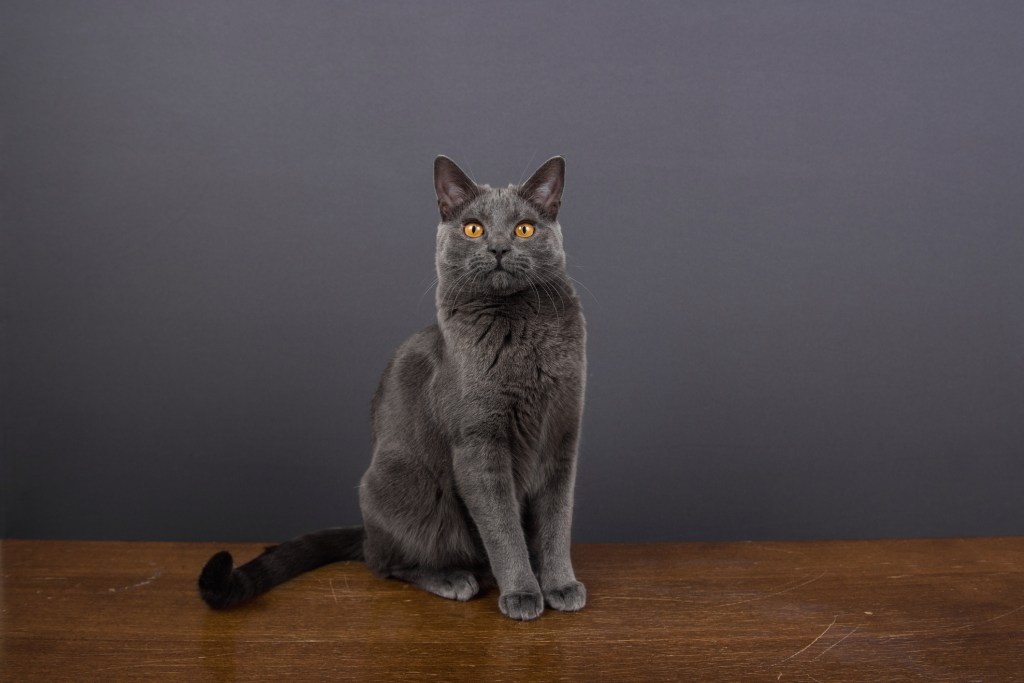
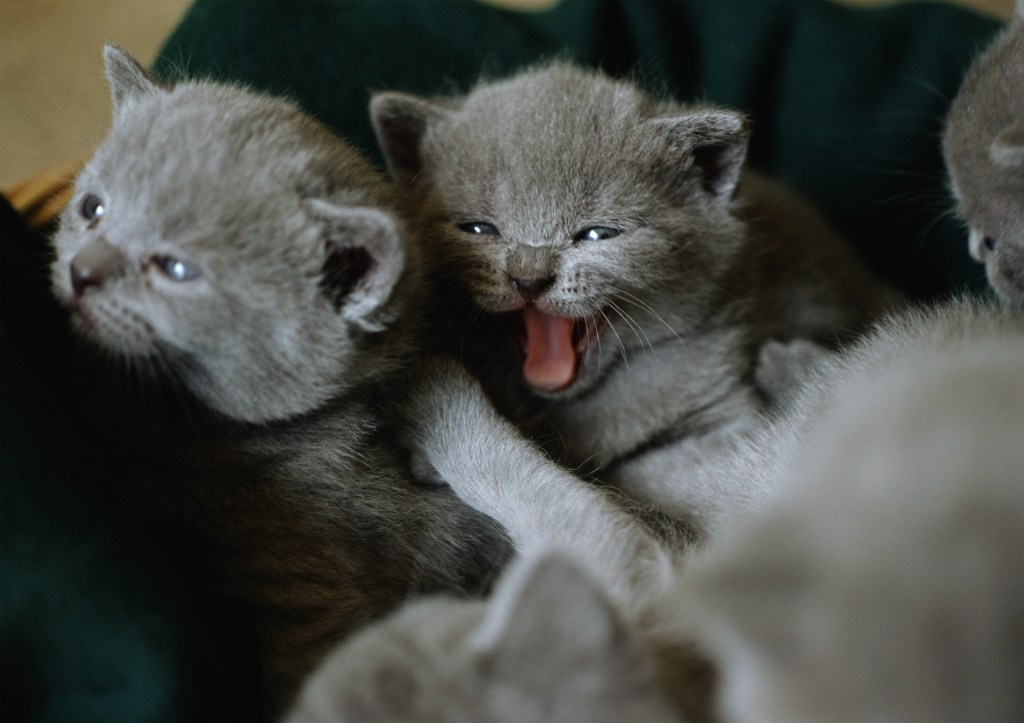
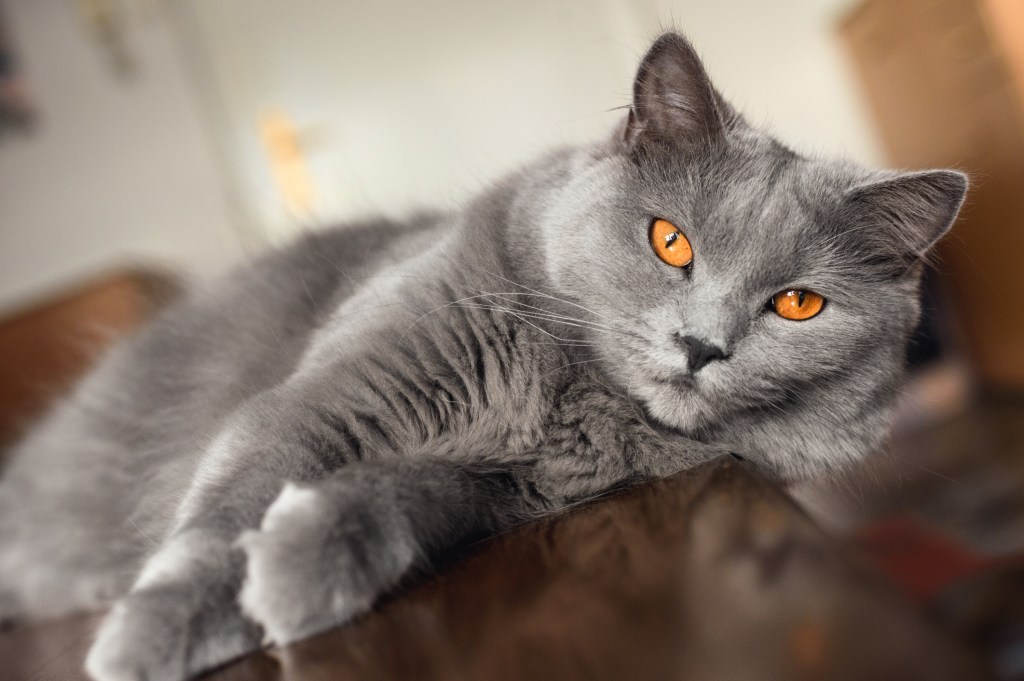
-
Affectionate with Family
Some cat breeds are typically independent and aloof, even if they’ve been raised by the same person since kittenhood; others bond closely to one person and are indifferent to everyone else; and some shower the whole family with affection. Breed isn’t the only factor that goes into affection levels; cats who were raised inside a home with people around feel more comfortable with humans and bond more easily.

See Cats Less Affectionate with Family -
Amount of Shedding
If you’re going to share your home with a cat, you’ll need to deal with some level of cat hair on your clothes and in your house. However, shedding does vary among the breeds. If you’re a neatnik, you’ll need to either pick a low-shedding breed or relax your standards. This furniture cover can make it easier to clean up cat hair and keep it off your sofa!
-
General Health
Due to poor breeding practices, some breeds are prone to certain genetic health problems. This doesn’t mean that every cat of that breed will develop those diseases; it just means that they’re at an increased risk. If you’re looking only for purebred cats or kittens, it’s a good idea to find out which genetic illnesses are common to the breed you’re interested in.
-
Potential for Playfulness
Some cats are perpetual kittens—full of energy and mischief—while others are more serious and sedate. Although a playful kitten sounds endearing, consider how many games of chase the mouse-toy you want to play each day, and whether you have kids or other animals who can stand in as playmates. A classic wand cat toy like this one is perfect for playful felines!
-
Tendency to Vocalize
Some breeds sound off more often than others with meows, yowls, and chattering. When choosing a breed, think about how the cat vocalizes and how often. If constant “conversation” drives you crazy, consider a kitty less likely to chat.
-
Kid-Friendly
Being tolerant of children, sturdy enough to handle the heavy-handed pets and hugs they can dish out, and having a nonchalant attitude toward running, screaming youngsters are all traits that make a kid-friendly cat. Our ratings are generalizations, and they’re not a guarantee of how any breed or individual cat will behave; cats from any breed can be good with children based on their past experiences and personality.
-
Friendly Toward Strangers
Stranger-friendly cats will greet guests with a curious glance or a playful approach; others are shy or indifferent, perhaps even hiding under furniture or skedaddling to another room. However, no matter what the breed, a cat who was exposed to lots of different types, ages, sizes, and shapes of people as a kitten will respond better to strangers as an adult.
-
Easy to Groom
Some breeds require very little in the way of grooming; others require regular brushing to stay clean and healthy. Consider whether you have the time and patience for a cat who needs daily brushing. You should definitely pick up this awesome de-shedding tool for cats of any hair length!
-
Intelligence
Some cat breeds are reputed to be smarter than others. But all cats, if deprived the mental stimulation they need, will make their own busy work. Interactive cat toys are a good way to give a cat a brain workout and keep them out of mischief. This scratcher cat toy can keep your smart kitty busy even when you’re not home!
-
Pet Friendly
Friendliness toward other household animals and friendliness toward humans are two completely different things. Some cats are more likely than others to be accepting of other pets in the home.
Chartreux History
With his cloak of gray fur, sober as a monk’s robes, it’s no wonder that the Chartreux was associated with the Carthusian order in France. The quiet mousers would have been perfect companions for members of the silent, solitary order. It’s a pretty legend, but there is no real evidence that the cats were kept by the Carthusians, although perhaps they were simply not considered important enough to mention.
A more likely scenario is that the cats, a natural breed, were commonly found in France at least as far back as the 18th century, performing rat patrol in stables, shops and homes. Unfortunately for the beautifully furred felines, they were also prized by furriers for their thick blue pelts. A type of luxurious wool called “pile de Chartreux” may have taken its name from the soft, woolly coated cats.
As with so many breeds, however, it’s not really known how the cats came by their name or how or where they were developed. One of the earliest references to a French gray cat dates to 1558, an epitaph for Belaud, who belonged to poet Joachin de Bellay. Bellay describes Belaud “death to rats,” which is certainly an attribute of the breed, then and now.
The first reference to the name Chartreux for the blue cats is found in the Universal Dictionary of Commerce, Natural History and the Arts and Trade of Savvary of Brusion, published in 1723, which also mentions the cats’ association with the fur trade. French naturalist George-Louis Leclerc, Comte de Buffon, described them as the cat of France and gave them the Latin name Felis catus coeruleus, meaning blue cat.
Free-living groups of the cats lived in Paris and other areas of France until the early 1900s. They were not much valued, except for their skins and their aptitude for vermin control. It wasn’t until after World War I that French cat lovers took steps to preserve the breed. They gathered as many cats as they could and wrote a breed standard. Using only the cats that met the standard and produced kittens that met it, they were able to begin exhibiting the cats in European shows in either 1928 or 1931, depending on the source.
One of the breed’s early adherents was the novelist Colette, whose Chartreux Saha took pride of place in her book La Chatte. General Charles de Gaulle was also known to love the breed, owning one named Gris Gris. It was fortunate that fanciers had begun to breed the Chartreux when they did, because after World War II, none of the free-roaming cats could be found.
Chartreux, which are still uncommon, were first imported into the United States in 1970 and were recognized by the Cat Fanciers Association in 1987. Today the cats are recognized by all major American cat associations. The Chartreux is even the official mascot of the Montreux Jazz Festival. They are less known in Europe, even in their homeland of France. Unlike many cat breeds, they have changed little over the years and remain, as Bellay wrote: “the most handsome perhaps That nature ever made in cat’s clothing.”
Chartreux Size
The Chartreux typically weighs between 7 and 16 pounds.
Chartreux Personality
The Chartreux might well be compared to a mime, silent but communicative and sometimes silly. Short playtimes interspersed with naps and meals are his idea of the perfect day. When he is not displaying his superb timing and pouncing ability, “killing” toys with abandon, or performing acrobatic flips as he chases a lure toy, he is an attentive and gentle companion who likes to stay near his people and observe their doings.
He appreciates any attention he receives, especially if it involves scratching him beneath the chin or between the ears, but he’s not demanding, content to follow you around devotedly, sleep on your bed and snuggle with you if you’re not feeling well. He rarely uses his voice, preferring to direct your actions with a glance from his pumpkin-colored eyes. If need be, however, he may communicate with a small meow or chirp.
Make a habit of observing him carefully and being familiar with his actions since it is unlikely that he will vocalize any discomfort or make any sound to let you know where he is. This is an adaptable cat with a middle-of-the-road personality. He’s not a social butterfly, but he’s not a shy wallflower, either. Expect him to watch and wait before deciding whether to greet a guest or otherwise involve himself in a situation.
His calm nature makes him suited to staying home alone while you are out earning the money for his treats and toys, but he won’t object to keeping company with another cat or dog. That same good nature makes him a good travel companion for an RV enthusiast or long-distance truck driver. As long as you keep his routine similar each day, he will be a happy camper.
The Chartreux has a sunny, polite disposition that makes him a pleasure to live with. This is one cat who does his best to obey the rules. Always treat him kindly and patiently, and you will be rewarded with a friend for life.
Chartreux Health
Both pedigreed cats and mixed-breed cats have varying incidences of health problems that may be genetic in nature. Chartreux are generally healthy, but the following problems have been seen in the breed:
- Patellar Luxation is a hereditary dislocation of the kneecap that can range from mild to severe. Mild patellar luxation rarely causes problems. Severe cases cause lameness, but can be alleviated with surgery.
Chartreux Care
The Chartreux’s short, thick coat is easy to care for with weekly brushing. The coat sheds in the spring and may require extra brushing during that time. A bath is rarely necessary. If your Chartreux does require a bath, remember that it can take time to get the water-repellent coat wet enough for bathing.
Brush the teeth to prevent periodontal disease. Daily dental hygiene is best, but weekly brushing is better than nothing. Trim the nails every couple of weeks. Wipe the corners of the eyes with a soft, damp cloth to remove any discharge. Use a separate area of the cloth for each eye so you don’t run the risk of spreading any infection.
Check the ears weekly. If they look dirty, wipe them out with a cotton ball or soft damp cloth moistened with a 50-50 mixture of cider vinegar and warm water. Avoid using cotton swabs, which can damage the interior of the ear. Keep the Chartreux’s litter box spotlessly clean. Cats are very particular about bathroom hygiene.
It’s a good idea to keep a Chartreux as an indoor-only cat to protect him from diseases spread by other cats, attacks by dogs or coyotes, and the other dangers that face cats who go outdoors, such as being hit by a car. Chartreux who go outdoors also run the risk of being stolen by someone who would like to have such a beautiful cat without paying for it.
Chartreux Coat Color And Grooming
The Chartreux has the sturdy, powerful body of a working cat wrapped in a short, thick, water-repellent coat. Besides his beautiful fur, his most distinctive feature is his deep orange eyes, set in a rounded, broad head. He has full cheeks and a sweet, smiling expression. Medium-size ears sit high on the head.
His body type is sometimes described as primitive, being husky and robust with broad shoulders and a deep chest. His relatively short and fine-boned legs rest on round, medium-size paws that look almost dainty. A lively, flexible tail is heavy at the base, tapering to an oval tip. Don’t let his ample body and solid muscle mass fool you. This is a supple, agile cat who typically weighs 7 to 16 pounds at maturity. Pick him up and you may be surprised by his heft.
Chartreux grow slowly and males especially may not reach their full size until they are 4 or 5 years old. The medium-short double coat has a slightly woolly texture, which varies depending on the cat’s age and gender, as well as the climate in which he lives. For instance, mature males have the heaviest coats, while females or young cats may have a thinner coat or one that feels silky. The coat can be any shade of blue-gray.
The tips of the fur look as if they have been lightly brushed with silver. Kittens may have the faint imprint of tabby markings (called ghost barring) or tail rings, but by the time they mature the coat should have a bright, even tone. Completing the look is slate-gray nose leather, blue lips, and rose-taupe paw pads.
Children And Other Pets
The tolerant and gentle Chartreux fits nicely in a home with children. He is more likely to walk away than to scratch if he doesn’t like the way he is being handled. Parents with young children should always supervise interactions to make sure the cat isn’t mistreated.
He is happy to live with cat-friendly dogs, too, thanks to his amiable disposition. Introduce pets slowly and in controlled circumstances to ensure that they learn to get along together.
Chartreux Rescue Groups
More Info For You
If you’re also looking for a dog, check out DogTime’s dog breed page!
